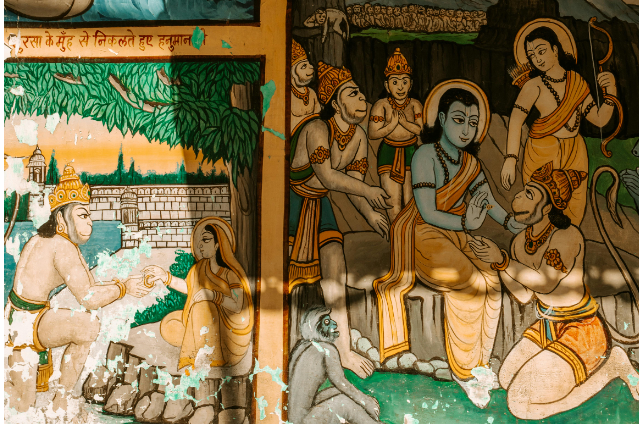
Anime, or Japanese-style animation, has been a prominent form of media in international circles since at least the 1970s, with the dubs of shoujo anime like The Rose of Versailles and the anime adaptation of Anne of Green Gables. The tentative time as to when anime became mainstream is debatable, but most anime started being shown in households outside of Japan when networks like Cartoon Network and Toonami took it upon themselves to run the dubbed versions of kid-friendly anime like Pokémon and Digimon, introducing children to a whole new medium of animation – one with big expressive eyes and newer art styles.
In India, anime became popular in the late 90s when television found its way into every middle-class home. Children grew up watching the dubs of anime like Shin-chan and Doraemon, to the point that both of these works have become cultural landmarks in the country. The introduction of the internet in the 2000s and the self-isolation during the quarantine boosted the popularity of anime within mainstream Indian entertainment circles (that is not to deny the subsection of fans that existed beforehand), making it so that a bootleg of Luffy or Tanjiro is not a rare sight in the cities anymore.
With this newfound popularity in anime and the art styles that come under it, there is a desire among the Indian fanbase to mix their cultural leanings into it. Aside from fan-made animations depicting life in different parts of India by talented Indian artists and animators, there is a demand for mythical cultural tales like the Ramayana and Mahabharata to be seen in the style of a typical anime, which would be epic and provide justice to the characters that live-action movies, in any Indian film industry, cannot. People can see the gods decked out in gold and jewels without worrying about tacky imagery, and battle scenes can be executed without the heavy use of CG.
However, what many do not know about is the existence of an animated movie, Ramayana: The Legend of Prince Rama, which was released in 1993. It was a co-production between Japan and India, with its director, Yugo Sako, having directed the movie with love and care due to his fascination with India and its ancient culture. It was one of the few international animation collaborations India had had with any country, and the medium used was a soft anime art style, recognizable to any casual fan. The movie was dubbed into three Indian languages – Hindi, Telugu, and Tamil – along with Japanese and English.
As for where the movie stands in terms of an adaptation, it only adapts the main storyline of the Ayodhya prince, his marriage, the exile, the kidnapping, and the eventual rescue – removing many of the side plots to prevent the runtime from being too long. It captured the essence of the Sanskrit epic, though it removed a lot of the context and lore, perhaps to make the story more universal or palatable to people of all ages and religions since the movie was shown in countries that did not have a cultural affinity to the Ramayana.
With social media and media discourse open to everyone, one has to wonder if the anime movie is actually an homage to India and its cultural landscape or a flawed attempt at trying to adapt an extensive epic like the Ramayana, which is tied deeply into Hindu mythology and traditions. The adaptations of Ramayana have been inconsistent in quality. Fiction mostly delves into retellings (though political and religious interference often make it hard to truly explore the nuances of such a detailed epic), and unlike the epics written by Homer, Ramayana is rooted in the Indian subcontinent. It is simply not allowed to be as popular as the Odyssey or the Iliad – partly due to the prominence of Western works in literary and cultural discourse and partly due to more freedom in assessing the Greek and Roman myths, as the followers are few and far between. Visual adaptations, too have had interesting phases, from the beloved television serial from the 80s to the travesty that was Adipurush.
For such a simple core narrative, the epic has been proven hard to adapt in a meaningful way. The anime, from a highly subjective opinion, is the best form of cultural appreciation. It never attempts to change the names or locations of the characters to make it palatable to an international audience, nor does it talk down to the people watching it. Ramayana: The Legend of Prince Rama is wholly Indian, despite the Japanese production, in its values and execution. There is clear love and passion poured into this project, and though it skipped a lot of the Dharmic and background lore elements, it brings out a raw, beautiful version of the epic. The visuals make the story jump to life, and many who saw it in theatres back in the day see it as the definitive version of Ramayana, at least in terms of visual adaptations.
The movie does not attempt to make it more Japanese or Western but rather presents an abridged version of the beloved tale that every Indian child has heard in childhood, whether from family or friends. Cultural appreciation is a lost art – one that gets mangled due to the past horrors of colonisation and the cultural appropriation of indigenous works by dominant cultures. The Indian-Japanese collaboration, however, does not fall into this curse.
